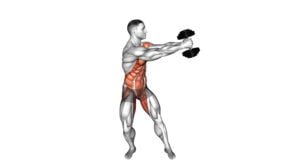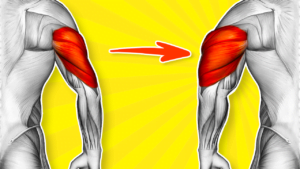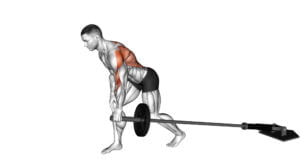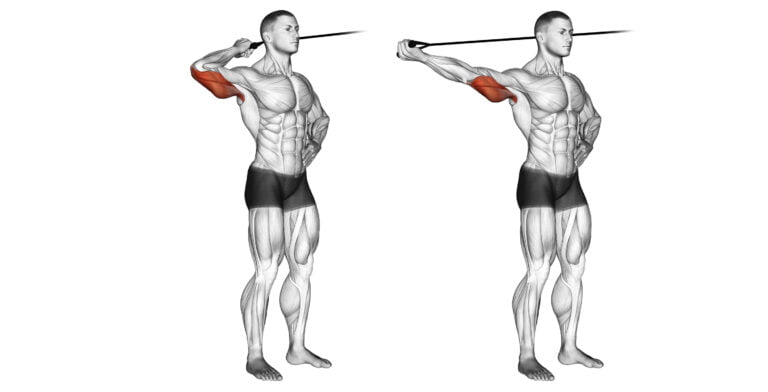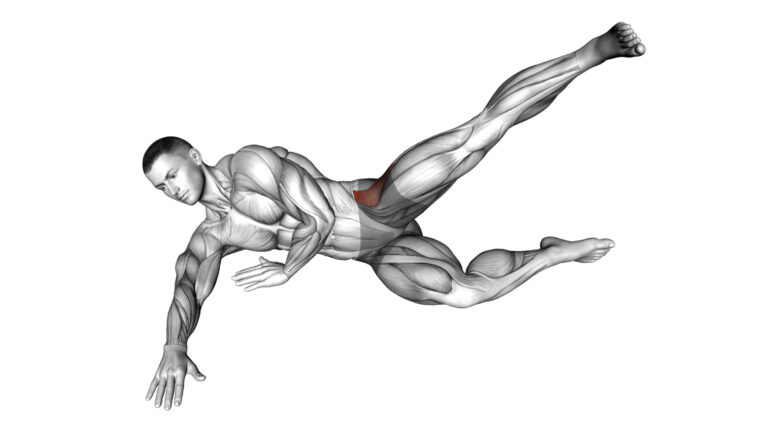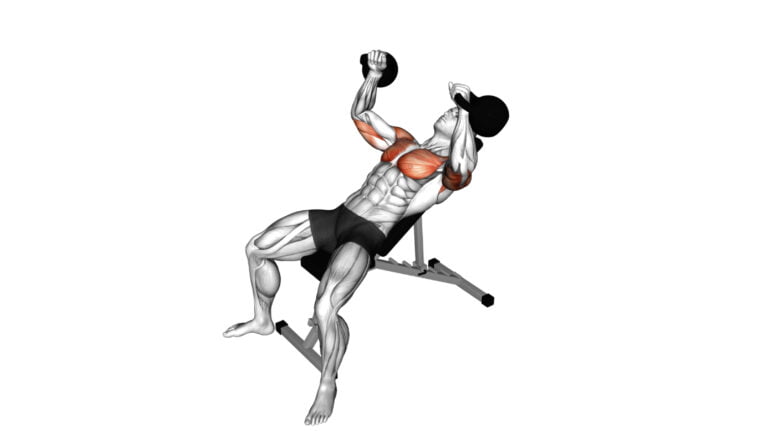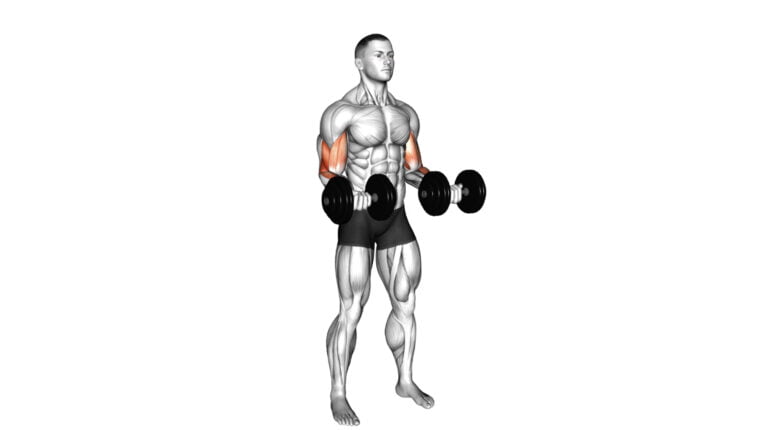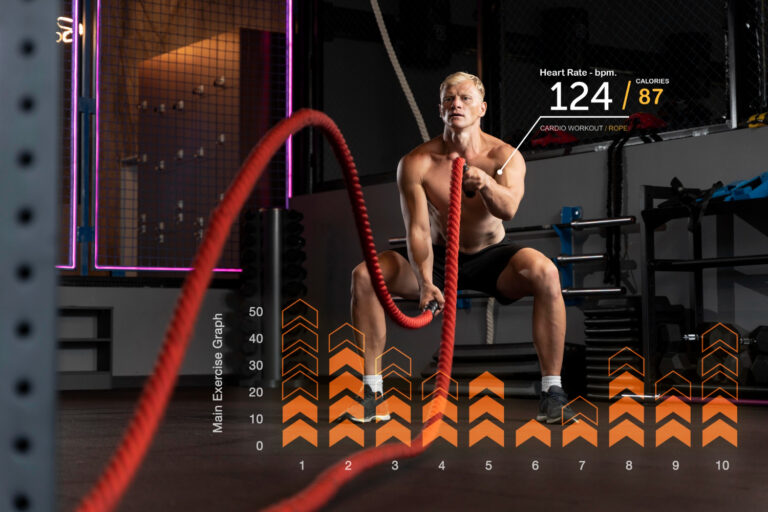5 Effective Compound Chest Exercises With Dumbbells For Building Strength And Definition
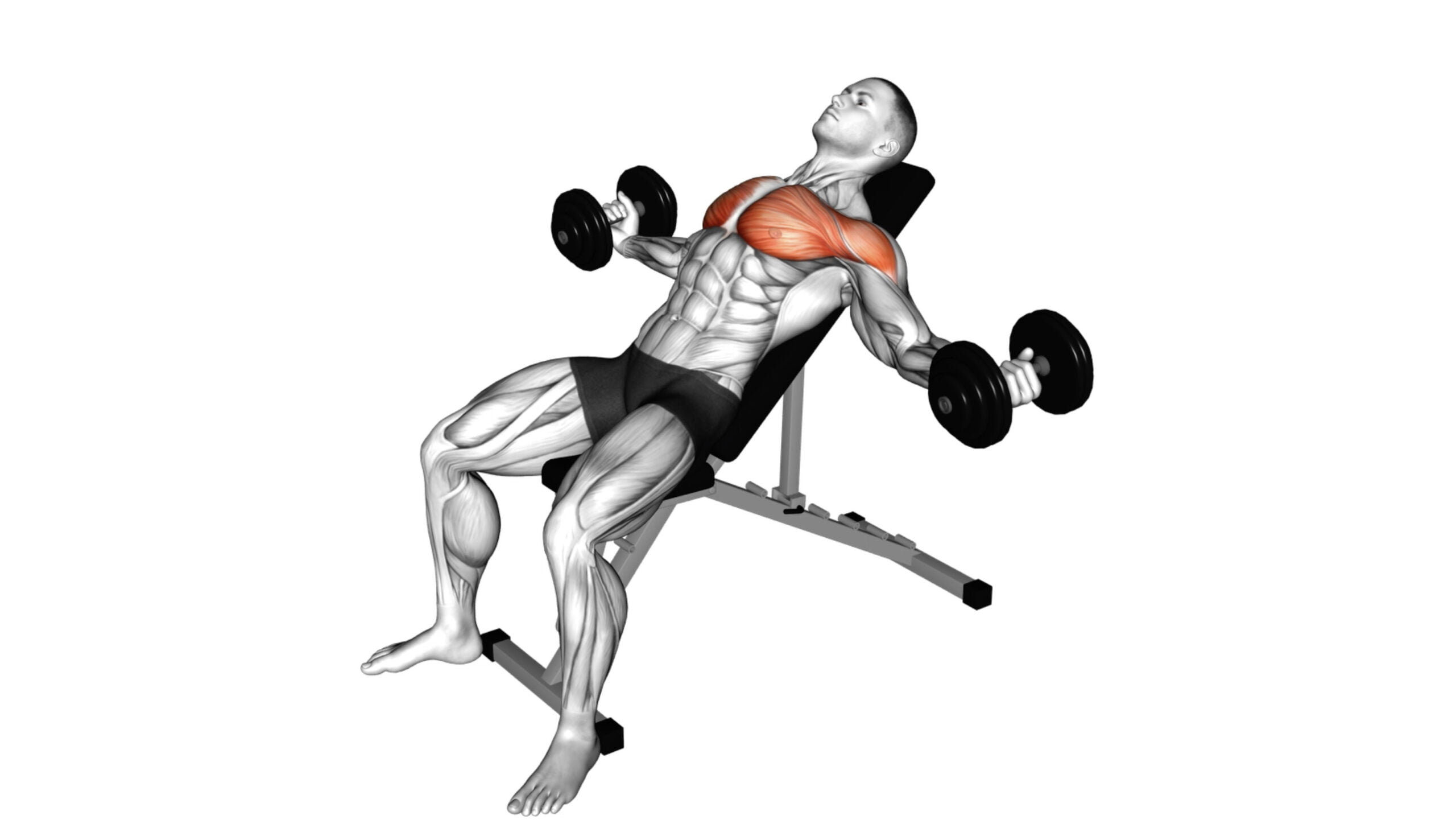
Building a strong and defined chest is a goal for many fitness enthusiasts, yet achieving this can often feel like an elusive quest. With over a decade of experience as a certified personal trainer, I’ve witnessed firsthand the common pitfalls and misconceptions that can derail progress—particularly the belief that barbells are superior to all other equipment for chest development.
But let me dispel that myth: dumbbells are equally powerful in sculpting your pecs.
Dumbbell exercises invite more stabilizing muscles into play, promoting muscle symmetry and deeper tissue growth compared to their barbell counterparts. This article will delve into five compound dumbbell movements that target not just the chest but also engage multiple muscle groups simultaneously—offering you functionality and efficiency within your workouts.
Keep reading; these insights could revolutionize your regimen with just simple free weights. Ready to transform?.
Key Takeaways
- Dumbbell exercises engage stabilizing muscles for a symmetrical chest and can correct muscle imbalances, which is essential for building strength and preventing injuries.
- Incline dumbbell presses target the upper chest effectively; combine these with flat and decline variations to work all chest muscle fibers.
- Compound movements like dumbbell pullovers and renegade rows involve multiple muscle groups, increasing efficiency in workouts for functional strength.
- Achieving definition in the pectoral area involves varied rep schemes: low reps with heavier weights for strength or higher reps with lighter weights for endurance.
- Consistency in performing at least two to three focused chest workouts per week using dumbbells is key to developing a well-defined chest.
Chest Anatomy and Function
The chest muscles, including the pectoralis major and minor, along with the serratus anterior, play a key role in shoulder movement and stability. Understanding their function is crucial for effectively targeting these muscles during workouts.
Pectoralis Major
Your chest’s power comes largely from the pectoralis major, a thick, fan-shaped muscle that stretches across your upper ribcage. It anchors on your clavicle, sternum, and ribs before converging like fingers to insert at the humerus near your shoulder joint.
When you push, throw or bring your arms together in front of you—think bench press or push-ups—you’re relying on this key player for strength and motion.
Developing the pec major not only boosts overall upper body power but also sculpts a defined chest that stands out. Its fibers run in different directions: clavicular heading down from the collarbone, sternal sweeping across from the breastbone, and costal upward from the ribs.
This orientation allows for varied exercises targeting specific areas within one compound movement. Engaging these fibers effectively requires consistent work with movements like dumbbell presses and flyes which promote muscle growth through progressive overload—a principle where muscles adapt by growing stronger after being exposed to increased resistance over time.
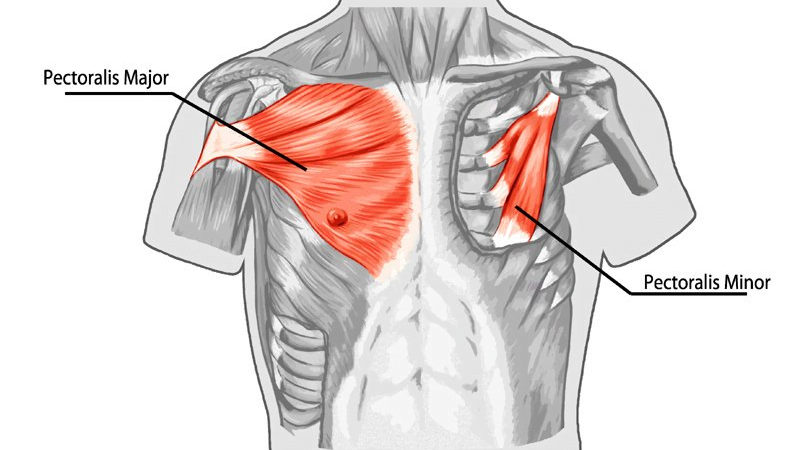
Pectoralis Minor
While the pectoralis major garners a lot of attention, let’s not overlook its counterpart, the pectoralis minor. Tucked beneath the larger pec major, this smaller muscle plays a critical role in stabilizing and moving your shoulder blade.
Every time you perform activities that require arm movement across your body or downward pulling motions, your pec minor is hard at work.
Strengthening the pectoralis minor isn’t just about aesthetics; it helps improve posture and prevents shoulder injuries by keeping the scapula properly aligned with rib cage movements.
During compound chest exercises like push-ups or dumbbell presses, pay close attention to maintaining proper form as it activates this deeper muscle group along with its big brother for harmonized upper body strength and function.
Serratus Anterior
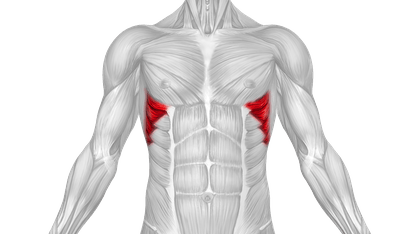
Moving beyond the pectoralis minor, let’s focus on the serratus anterior, another vital player in the chest’s anatomy that contributes to a strong and defined upper body. This muscle stretches from your upper ribs to the shoulder blade and is crucial for moving and stabilizing these bones during exercise.
It helps with actions like pushing and punching; think of it as an assistant that keeps your shoulders rolling smoothly as you power through those compound exercises.
Engaging your serratus anterior isn’t just about aesthetics; it also promotes healthy shoulders by preventing impingement or pain. Dumbbell exercises that require reaching overhead or rotating can work this muscle effectively.
With each dumbbell press up or pullover, you’re not only working toward a chiseled chest but ensuring that your shoulder blades are well-supported by this undercover hero of stability – making every rep count towards building functional strength where you need it most.
Benefits of Using Dumbbells for Chest Exercises
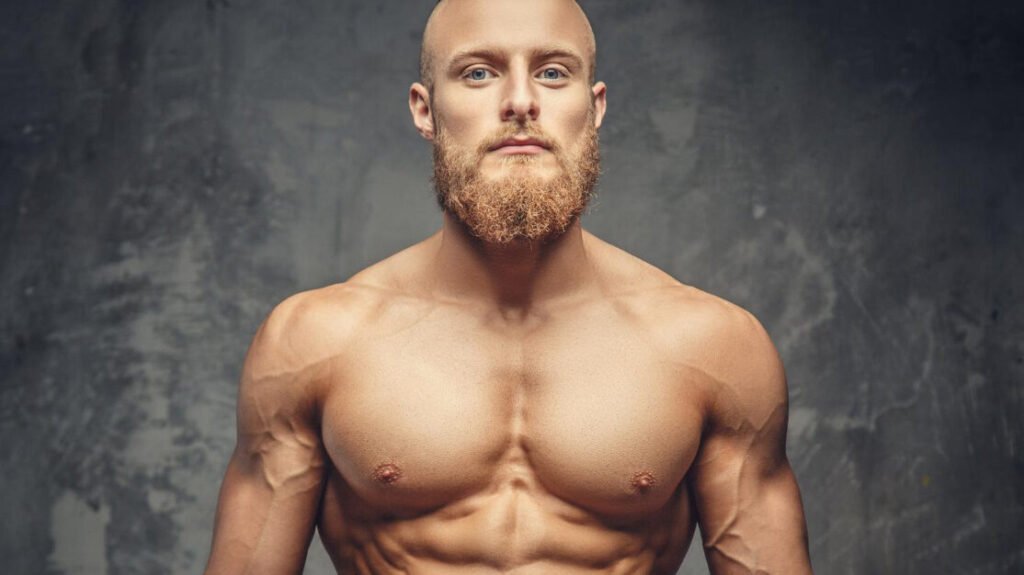
Using dumbbells for chest exercises offers improved stability and allows for more efficient muscle activation, leading to better results. Dumbbells also provide the ability to correct muscle imbalances, ensuring that all areas of the chest are targeted during workouts.
Improved stability
Enhancing stability during chest exercises is crucial for maximizing muscle engagement and minimizing the risk of injury. By utilizing dumbbells, you can engage stabilizing muscles more effectively than with barbells or machines.
This increased demand on your stabilizers helps to improve overall balance and coordination while targeting different areas of the chest, resulting in a well-rounded and comprehensive training approach.
Greater stability also enables a wider range of motion, allowing for deeper muscle contractions and enhanced muscular development. Additionally, improved stabilization promotes better posture and form throughout each exercise, leading to more effective workouts and reduced strain on the joints.
More efficient muscle activation
Using dumbbells for chest exercises leads to more efficient muscle activation, engaging the pectoral muscles and stabilizing muscles in a way that promotes balanced strength development.
This dynamic activation helps to mitigate muscle imbalances and enhances overall functional movement patterns. By harnessing the increased range of motion during dumbbell exercises, you can effectively target multiple muscle groups simultaneously, maximizing your training efforts.
When performed with proper form and control, compound chest exercises with dumbbells leverage the body’s natural biomechanics to optimally recruit muscle fibers. This not only facilitates greater muscle engagement but also contributes to improved muscular coordination and proprioception.
Ability to correct muscle imbalances
Correcting muscle imbalances is crucial for overall strength and injury prevention. Dumbbell chest exercises allow each side of the body to work independently, helping to address any imbalances.
By focusing on unilateral movements, you can ensure that both sides are equally strong and stable, promoting better symmetry and reducing the risk of overcompensation injuries due to muscle imbalances.
5 Effective Compound Chest Exercises with Dumbbells for Building Strength and Definition
Get ready to supercharge your chest workout with these 5 effective compound exercises using dumbbells, designed to help you build strength and definition in your chest muscles. Read on to discover the power of these exercises and take your fitness routine to the next level!
1. Dumbbell Around Pullover
The dumbbell around pullover is a great compound exercise for targeting the chest, back, and triceps. To perform this exercise, lie on a bench with your feet flat on the floor. Hold a single dumbbell above your chest with both hands.
Lower the weight behind your head in a circular motion until you feel a stretch in your chest and then return to the starting position. This movement engages multiple muscle groups simultaneously, making it an efficient way to build upper body strength and definition.
By incorporating the dumbbell around pullover into your routine, you can effectively work on both your chest and back muscles while also engaging stabilizing muscles throughout the movement.
2. Dumbbell Deep Push-up and Renegade Row
Performing a dumbbell deep push-up and renegade row engages the chest, shoulders, triceps, and core muscles simultaneously. Start in a plank position while holding dumbbells in each hand.
Lower your body into a deep push-up, ensuring full elbow flexion. Push back up to the plank position before initiating the renegade row by lifting one dumbbell towards your hip while stabilizing through the core and avoiding rotation of the hips.
Alternate sides for maximum benefit and engagement.
3. Dumbbell Lying Pullover on Exercise Ball
The dumbbell lying pullover on an exercise ball engages the chest, back, and shoulders while challenging stability. Lie face up on an exercise ball with hips lifted to engage the glutes.
Hold a dumbbell overhead and slowly lower it behind the head, maintaining control to feel a deep stretch in the chest muscles.
Use this exercise to enhance overall upper body strength and stability with just one move. Implementing compound exercises like this into your routine can lead to significant improvements in muscle engagement and functional strength as you progress toward your fitness goals.
4. Dumbbell Incline Twist Press
The dumbbell incline twist press targets the upper chest, emphasizing the pectoralis major and minor muscles. This exercise not only helps in building strength but also improves the definition of the chest.
By incorporating a twisting motion during the press, it engages more muscle fibers, leading to greater muscle activation and development. The combination of incline positioning and twisting movement creates an effective compound exercise that thoroughly works out the chest, helping you achieve a well-defined and powerful upper body.
Next up: “Dumbbell One Arm Side Lying Bench Press”
5. Dumbbell One Arm Side Lying Bench Press
The dumbbell one arm side lying bench press is an effective exercise for targeting the chest muscles. To perform this exercise, lie on your side on a flat bench with a dumbbell in one hand.
Press the dumbbell upwards while maintaining control, engaging and contracting the chest muscle throughout the movement. This exercise helps to improve unilateral strength and stability while activating the pectoral muscles.
Using dumbbells allows for a greater range of motion and requires stabilization from various muscle groups, leading to enhanced muscle activation and development. Incorporating the one arm side lying bench press into your chest workout routine can help to address any muscular imbalances and ensure that both sides of your chest are equally engaged during training sessions.
Tips for Incorporating Dumbbell Chest Exercises into Your Routine
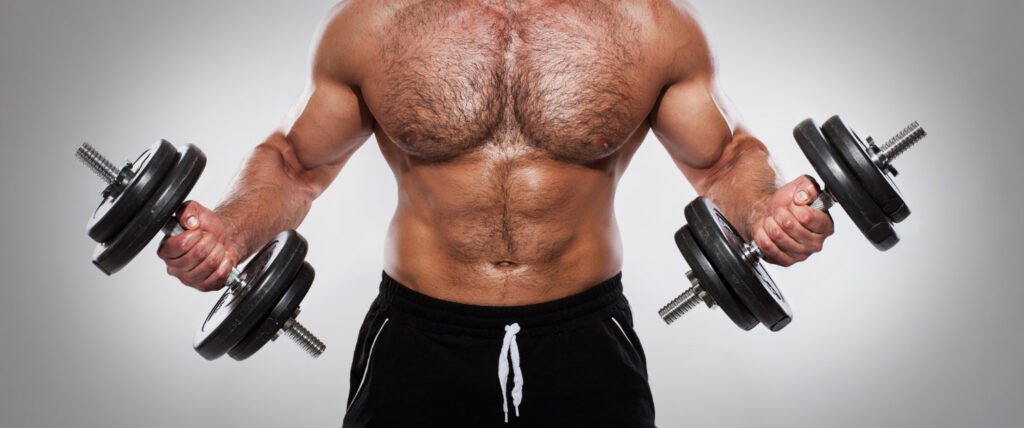
To maximize the effectiveness of your dumbbell chest workouts, focus on a balanced rep scheme and volume while targeting specific areas like the upper chest, and consider incorporating these exercises into a well-rounded fitness routine.
Ready to build strength and definition in your chest? Keep reading for more valuable tips!
Rep scheme and volume
The rep scheme and volume for your dumbbell chest exercises should align with your specific fitness goals. For building strength, aim for 6-8 reps per set with a heavier weight. If hypertrophy is the goal, opt for 8-12 reps to stimulate muscle growth.
To improve muscular endurance, target 12-15 reps with lighter weights. Adjust the number of sets according to your overall training volume, ensuring adequate rest between sets to maintain intensity.
Understanding how to manipulate rep schemes and volume will optimize your progress in building chest strength and definition through dumbbell exercises. It’s essential to tailor these parameters based on individual goals and capabilities while also considering recovery needs and progression over time.
Targeting specific areas (upper chest) with dumbbell exercises
To effectively target the upper chest area with dumbbell exercises, focus on movements that involve shoulder flexion. Incorporate incline dumbbell presses to emphasize this region and develop well-rounded chest strength and definition.
Adjust the bench to a 30-45 degree angle for maximum impact, ensuring that the targeted area is engaged throughout the exercise. Engaging in regular incline pressing with dumbbells can lead to noticeable improvements in upper chest development, helping you achieve a balanced and sculpted upper body.
By incorporating incline dumbbell presses into your routine, you can specifically target and strengthen your upper chest muscles while promoting overall upper body strength and stability.
Frequency of workouts
To effectively build strength and definition in your chest muscles, it’s important to establish a consistent workout routine. Aim for at least two to three workouts per week that specifically target the chest using compound dumbbell exercises.
Incorporating these workouts into your weekly fitness plan will not only help you develop a well-defined and powerful chest but also ensure that you’re giving adequate attention to this muscle group.
It’s essential to allow sufficient recovery time between each session to promote muscle growth and prevent overtraining, so listen to your body and adjust the frequency of workouts as needed based on how you feel.
Combining with dumbbell chest workouts with other muscle groups
To maximize your workout efficiency, incorporate dumbbell chest exercises with complementary muscle groups. Pair chest workouts with back exercises like dumbbell rows or pull-ups to ensure balanced strength development and prevent muscular imbalances.
Engaging in tricep-focused movements such as overhead tricep extensions or kickbacks after your dumbbell chest routine can provide a comprehensive upper body workout. For full-body engagement, consider combining your dumbbell chest routine with lower body exercises like lunges or squats for a complete and effective training session.
Integrating compound movements into your routines offers the advantage of engaging multiple muscle groups simultaneously, resulting in an efficient and holistic approach to building overall strength and definition.
Building a well-defined chest with dumbbells
To maximize the potential of your chest muscles, incorporating dumbbell exercises into your routine can be highly effective. These exercises are great for building upper body strength and definition, making them an essential component of any comprehensive workout plan.
By focusing on compound movements that engage multiple muscle groups simultaneously, such as dumbbell presses and flys, you can target various areas of the chest to achieve a well-defined and balanced appearance.
Additionally, adjusting the angle of the bench or using variations in grip and arm position while performing chest exercises with dumbbells allows for better isolation and targeting specific parts of the pectoral muscles.
Conclusion
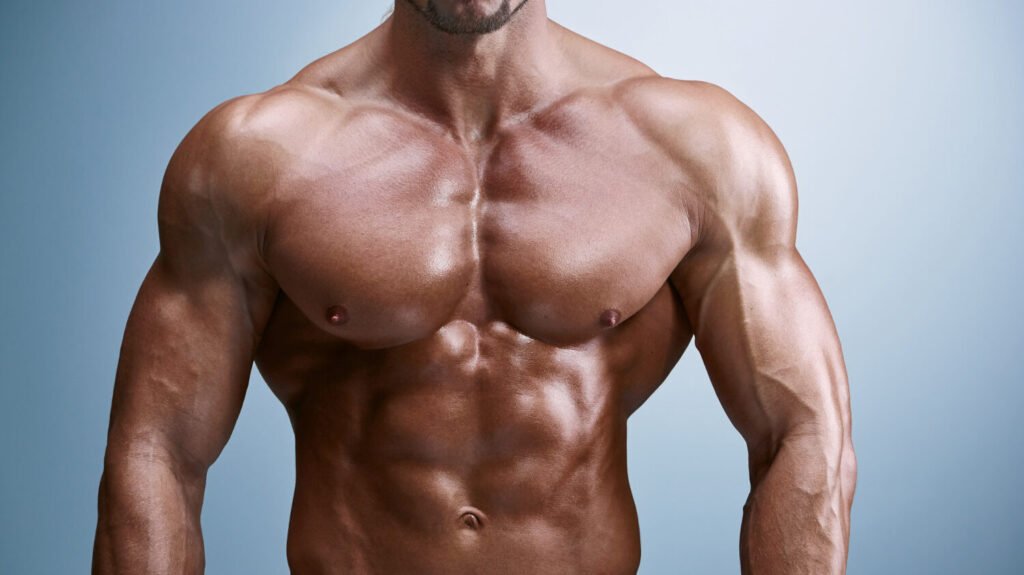
In conclusion, these 5 compound chest exercises with dumbbells provide a comprehensive approach to building strength and definition in your chest muscles. By incorporating these practical and efficient strategies into your workout routine, you can make significant improvements in both muscle strength and aesthetics.
Remember to focus on proper form and technique for maximum impact during your workouts. Explore additional resources or seek guidance from a fitness professional to further enhance your training regimen.
Strive towards consistency and dedication as you pursue your fitness goals.
FAQs
1. What are compound exercises for the chest?
Compound exercises for the chest work multiple muscle groups at once, like the pectorals, deltoids, lats, and triceps. Examples include dumbbell bench presses and incline bench press.
2. Why are push-ups considered a good compound exercise?
Push-ups target your pec muscles, shoulders, and arms all at once while also engaging your core strength. They are versatile and can be done with equipment like a weighted vest or just with body weight alone.
3. Can I use dumbbells for different chest workouts?
Yes! Dumbbells are perfect for many best compound chest exercises such as the flat chest press, incline flys, and decline bench press which help to build strength across the entire upper arm including rotator cuff muscles.
4. How do dumbbell flys benefit my chest workout?
Dumbbell flys focus on adduction of the upper arm bone towards your collar bone while building definition in costal cartilages – promoting lean muscle growth in your pecs beyond what isolation exercises offer.
5. Are there any benefits to adding weight when doing pushups or dips?
Absolutely! Using a dip belt during chest dips or wearing a weighted vest while doing regular push-ups adds resistance that challenges you more – helping strengthen not just your pectorals but also surrounding areas like side delts.
6. Should personal trainers include free-weight exercises in my routine if I want bigger muscles?
Definitely! Personal trainers often recommend free-weight movements such as kettlebell incline presses or barbell squats because they activate numerous joints (like elbow joints) leading to increased powerlifting potential and overall muscle mass gains.

Author
Years ago, the spark of my life’s passion ignited in my mind the moment I stepped into the local gym for the first time. The inaugural bead of perspiration, the initial endeavor, the very first surge of endorphins, and a sense of pride that washed over me post-workout marked the beginning of my deep-seated interest in strength sports, fitness, and sports nutrition. This very curiosity blossomed rapidly into a profound fascination, propelling me to earn a Master’s degree in Physical Education from the Academy of Physical Education in Krakow, followed by a Sports Manager diploma from the Jagiellonian University. My journey of growth led me to gain more specialized qualifications, such as being a certified personal trainer with a focus on sports dietetics, a lifeguard, and an instructor for wellness and corrective gymnastics. Theoretical knowledge paired seamlessly with practical experience, reinforcing my belief that the transformation of individuals under my guidance was also a reflection of my personal growth. This belief holds true even today. Each day, I strive to push the boundaries and explore new realms. These realms gently elevate me to greater heights. The unique combination of passion for my field and the continuous quest for growth fuels my drive to break new ground.

